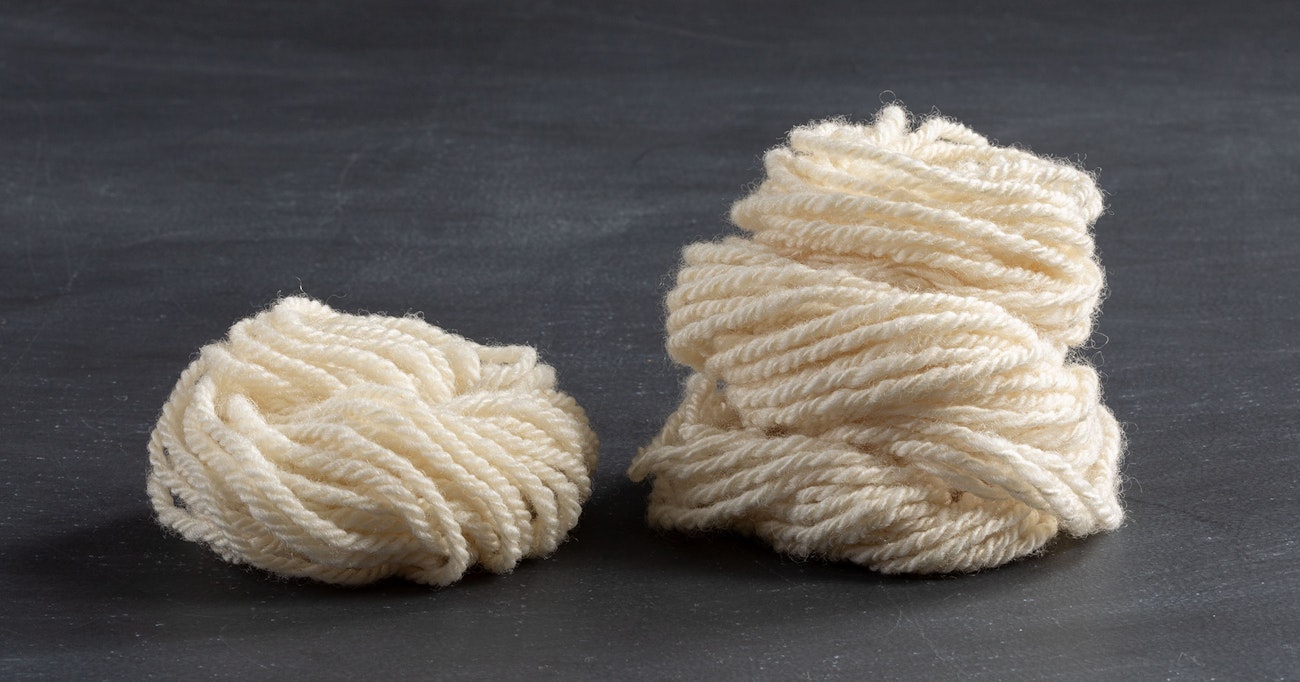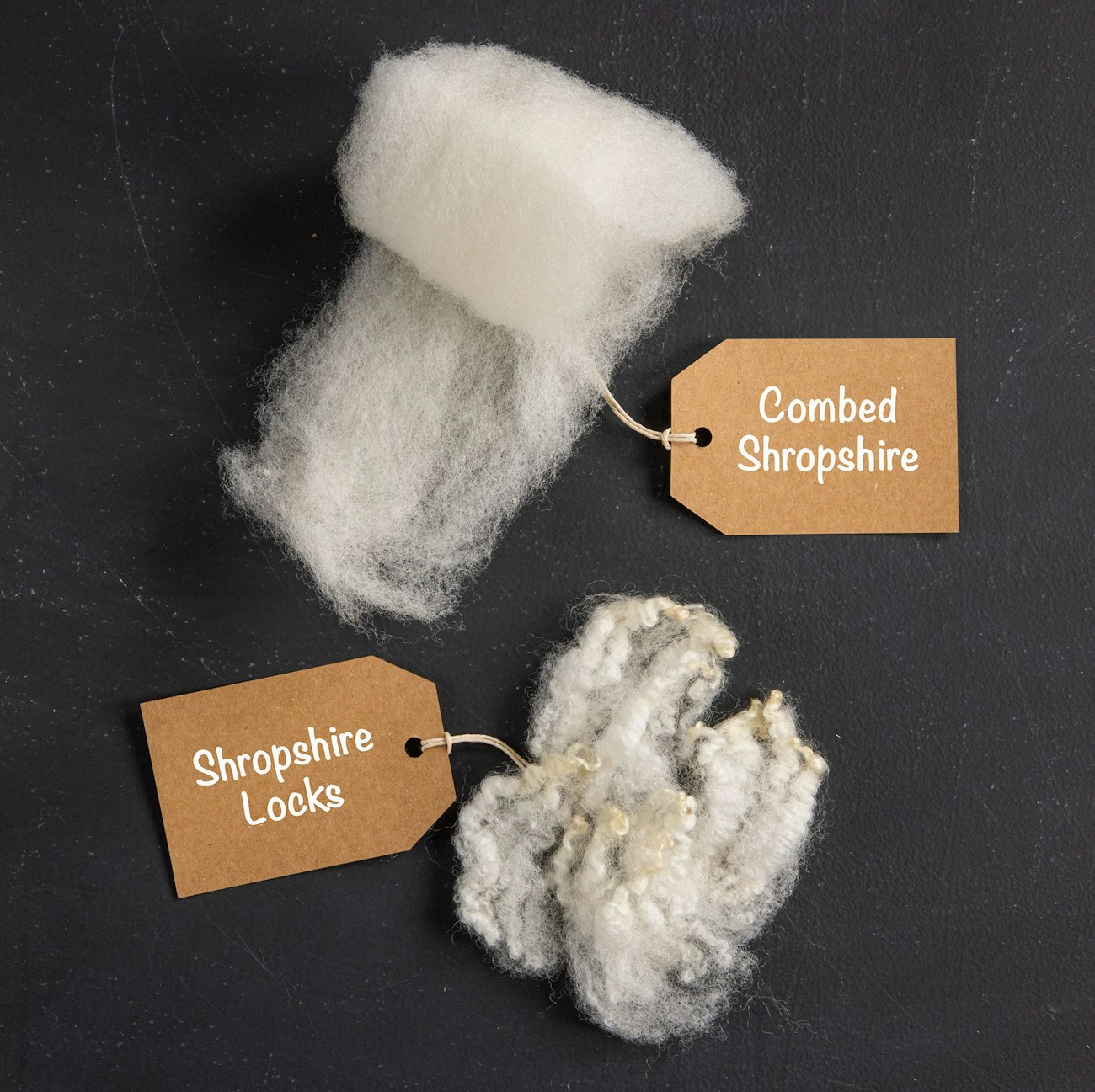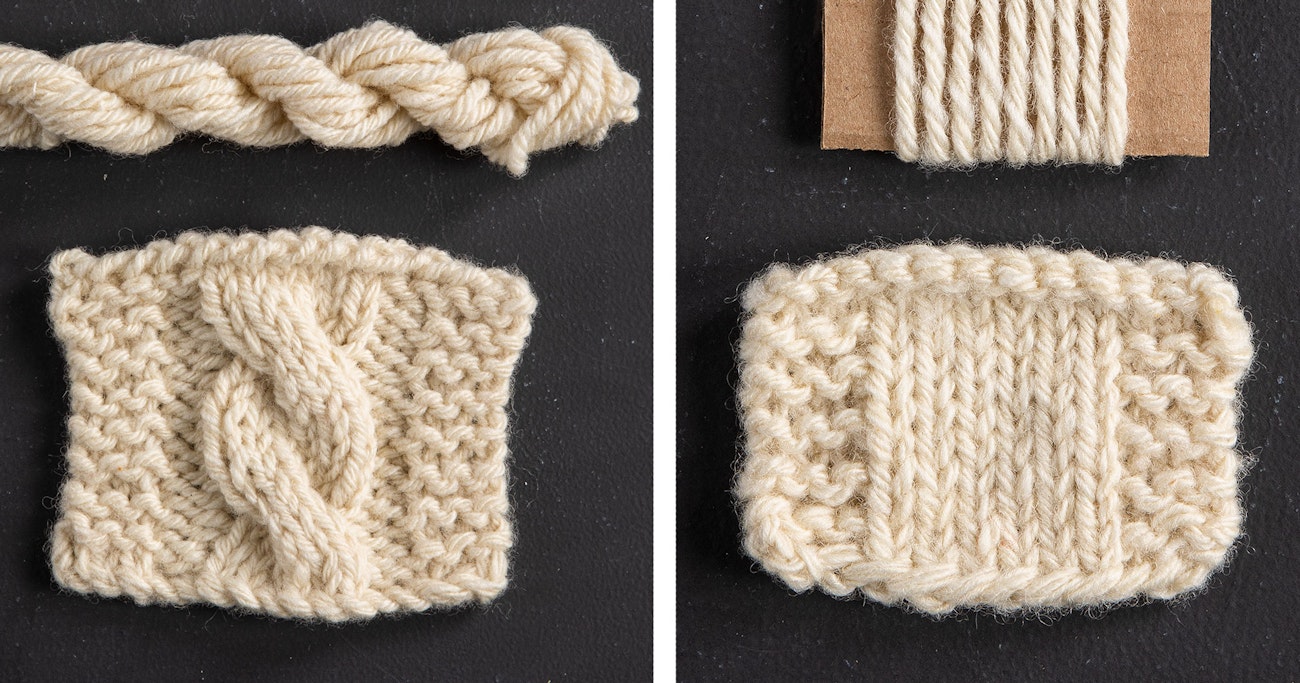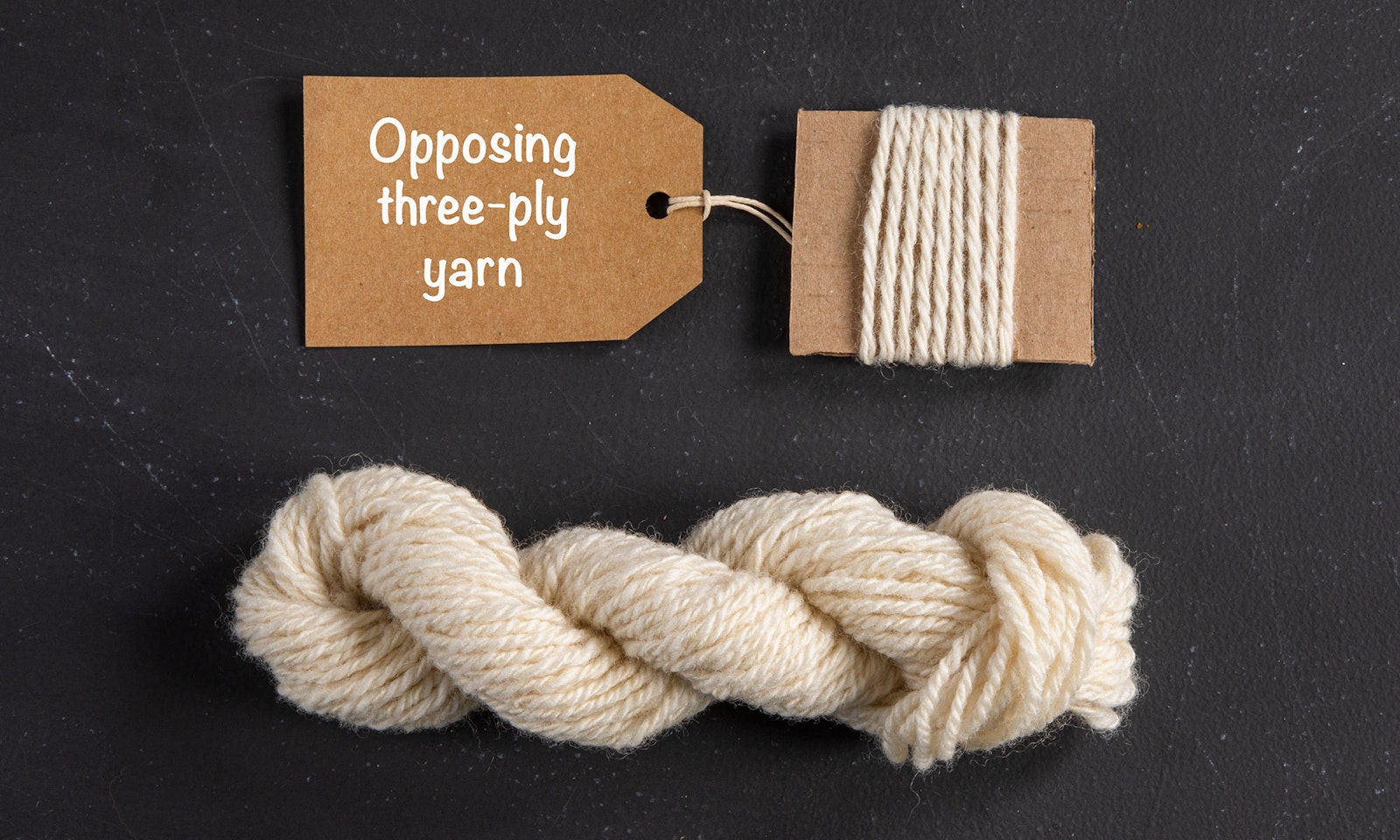Have you gotten your ticket for SOAR yet? This year’s Spin Off Autumn Retreat promises a wealth of interesting topics, presented by some of the most outstanding spinning teachers and fiber artists in the world.
To whet your appetite, we’ll introduce you to some of these instructors in the coming weeks. Here, longtime spinner and teacher Heavenly Bresser shares her experiment creating various opposing-ply yarns using wool—a topic she’ll be teaching at SOAR—and seeing how the yarns perform in a knitted fabric.
This condensed version was excerpted from the Winter 2021 issue of Spin Off. Find a link below to read the full article in the Spin Off Library.
—Editors
One of a handspinner’s greatest superpowers is the ability to create new and intriguing yarn designs. It simply requires a fresh perspective, some basic skills, and throwing caution to the wind. My eyes were first opened to the realm of possibilities by Sarah Anderson’s brilliant work in The Spinner’s Book of Yarn Designs. After that, my desire to try creating different yarn structures began to take root. Sarah’s book was one of my first encounters with the term “opposing ply,” and the investigation began.
A Little Opposition
An opposing-ply yarn is a multiple-ply structure in which one or more of the singles are spun in the direction opposite that of the primary singles. This means that when the singles are then plied in the reverse direction of the primary singles’ twist, the opposing ply or plies accumulate more twist in the direction in which they were originally spun. The result is an energized ply within the yarn structure. Spinning yarn this way creates an intriguing texture, and it has many uses.
One of the claims I hear from spinners in favor of opposing-ply yarns is that they make perfect yarns for socks. Once the technique is developed and honed, opposing-plied yarn often grows up to be a handspinner’s treasured sock yarn. What makes this family of yarns so unique and knitworthy? To answer that question, I decided to take on a challenge and create various opposing-ply yarns using only wool and then see how the yarns performed in a knitted fabric.
 Opposing plies tend to move toward the center of the yarn structure, making them less visible.
Opposing plies tend to move toward the center of the yarn structure, making them less visible.
For this experiment, I carefully selected a clean Shropshire fleece. This Down breed is native to the United Kingdom, and Shropshire fleeces in the United States today have varying fleece characteristics. The fleece that I am using has some crimp in the fibers and does not have a very blocky staple. The reason I have chosen this fleece is that it is already springy. I am curious to discover whether opposing plies will significantly increase the elasticity or bounce in an already bouncy fiber type. The fiber I have chosen measures 2 ½ to 3 inches in length. Although the fibers are fairly short and very suitable for carding, I wanted to try something different. To prepare the fleece for spinning, I used Valkyrie Fine wool combs to prepare the clean fleece into full, lofty bundles of handcombed top. This fleece was easy to comb and required only a single pass.
 For her experiment, Heavenly chose a bouncy Shropshire fleece. One combing pass using fine wool combs was all that this clean fleece needed to prepare it for spinning.
For her experiment, Heavenly chose a bouncy Shropshire fleece. One combing pass using fine wool combs was all that this clean fleece needed to prepare it for spinning.
Testing the Power of Elasticity
To test the elasticity of each yarn structure, I decided to keep the grist the same for each single in the multiple plies, including the opposing ply itself. To start, I spun a tiny sample of a traditional three-ply yarn as a standard for comparison. Each single was spun worsted at 17 wraps per inch (wpi) with a 1-inch, short-forward draft using a spinning wheel ratio of 10:1. The aim for each plied yarn was an average twist between 25 and 30 degrees plied at a ratio of 8:1. Keeping all things equal and adjusting the numbers of opposing plies and total plies helped me to examine any slight differences in the sample yarns.
 One of the most noteworthy outcomes of Heavenly's experiment is that each of her opposing-ply yarns was more elastic than the traditional three-ply yarn. If spun thinner with more ply twist, any of these opposing-ply constructions would make a perfect durable, comfy sock yarn.
One of the most noteworthy outcomes of Heavenly's experiment is that each of her opposing-ply yarns was more elastic than the traditional three-ply yarn. If spun thinner with more ply twist, any of these opposing-ply constructions would make a perfect durable, comfy sock yarn.
To measure the elasticity of the skeins, I decided to set the twist before measuring each one both relaxed and stretched. This allowed me to calculate the percentage of increased elasticity. I first measured the unstretched and then stretched traditional three-ply yarn sample; this would serve as my control sample. This control yarn displayed a 17 percent increase in length when stretched. Next, I looked at opposing three-ply, four-ply, and five-ply yarns to see how their results compared.
To read the full article and see Heavenly’s samples of opposing 3-, 4- and 5-ply yarns, and to get Heavenly’s best tips for spinning your own, head to the Spin Off Library.
Join Heavenly this October, where she’ll be teaching how to spin yarns with an opposing ply at the annual SOAR retreat. Read more about Heavenly’s “Opposing Plies” Sampler class and her Intensive “Blend and Spin with Wild Silk” on the SOAR website here.
Resources
- Anderson, Sarah. The Spinner’s Book of Yarn Designs: Techniques for Creating 80 Yarns. North Adams, Massachusetts: Storey Publishing, 2012.
- Robson, Deborah, and Carol Ekarius. The Fleece and Fiber Sourcebook. North Adams, Massachusetts: Storey Publishing, 2011.
Heavenly Bresser is an award-winning handspinner, teacher at major fiber events, spinning-wheel collector and restorer, and the founder of Heavenly Knitchet. She is excited to share her love of knitting, crocheting, spinning, weaving, and all things fiber related with the world. Some of her areas of passion include a love for working with color, working from fleece, and researching historic information for antique spinning wheels. Heavenly has made it her mission to help fiber artists of all levels expand their knowledge of their craft and try new things. Learn more at heavenlyknitchet.com.

